The second installment of the analysis on the undrafted free agent class will focus on the central divisions. Teams within these divisions usually profile more as mid market teams with a focus on internal development to achieve success, notable in teams such as the Guardians, Brewers, and Pirates. As such, the draft and UDFAs are crucial to pinpoint these player's true value as they directly contribute to a team's depth and success. Below is an analysis of each player signed by a Central Division team.
AL Central
White Sox
Steven Lancia - C, Texas-Rio Grande Valley
Galvan was among those named for the Buster Posey Award semifinalists and for good reason. He finished the year with a .335/.436/.505 slash line, ranked third in the NCAA with a 44.2 CS%, and earned First Team and All-Defensive Team nods for his conference. Although showing average power, the majority of his power came from pulling the ball, which would limit the potential in that category. He drastically cut down on the strikeouts as well, which in turn led to better pitch selection and drawing more walks. While his offensive ceiling may be that of a slightly below-average bat, his defensive ceiling rises above. As evident from the runners thrown out, he's got a strong, accurate arm and a quick transfer to limit base stealers. He provides plus framing behind the dish and projects well defensively. With the potential of a good defensive catcher, he gives organizational catching depth and may eventually see time in the majors, providing below-averagefour-year offense.
Jackson Nove - LHP, Kentucky
Nove is a 6 ‘5 pitcher who’s spent all four years with Kentucky out of the bullpen. In relief, he offers a lower 90s fastball and a slider with decent movement. Even in his best season, command remained a problem for Nove, evident by a 4.3 BB/9 and a 5.9 BB/9 for his four-year career. However, his delivery is deceptive and helps with the swing and miss. In his delivery, his right shoulder takes cover of the left side of the mound and hides his left arm during his windup. His body acts as a shield and hides the ball up until the pitch is released which prevents the batter, especially left handers, from seeing the ball early. Although lefty specialists are an endangered species with the three batter minimum, Nove projects well in this role and may eventually find a spot as the designated lefty arm.
Taussig has nearly the same build as the other White Sox signee, Jackson Nove, except Taussig is a position player. Taussig is a 6 ‘6, 230lbs corner outfielder who saw a breakout in power with an increase in extra base hits from 11 to 25. As expected with his size, there is plus raw power, however, it’s still yet to be fully unlocked. Combined with some great bat speed, there would be the expectation of more home runs, yet there is no consistency with the launch angle necessary to do so. Even without eye-popping power stats, Taussig has been a valuable contributor in the UTSA offense that found themselves eliminating top 5 seed Texas and into Omaha. Further developing the swing and unlocking the rest of his power can make Taussig a prospect to take notice of.
Guardians
None :(
Tigers
Danandres Colon - SS, Lakeland Christian (HS)
Colon has good size for a high schooler at 6 ‘2 190lbs, with still some room to grow. He’s a switch-hitter who primarily played shortstop but has experience in the outfield and other infield spots as well. He’s got a bit of a twitchy swing but is more fluid from the left-hand side, where he also displays more power. His swing is quick to the ball and produces well against velocity. The left side swing angle provides more lift, while the right side is more line drive oriented. His ability to play all over the field indicates good athleticism, where if his hands aren’t good enough to remain in the infield, it will allow him to contribute as a centerfielder. He’s a raw talent bat with a potential plus power tool and brings intrigue to the Tigers' farm system.
Luke Hoskins - RHP, Xavier
Hoskins is a 6‘4 185lbs pitcher with a bit of a sidearm delivery that makes for a fun sight on the mound. He fully transitioned into the bullpen midway through the season after starting the previous two seasons for Xavier. From the bullpen, he put up a 4.83 ERA in 26.1 innings with 9 walks and 28 strikeouts. His new relief role allowed for the strikeout potential to emerge, with the K/9 rate reaching past 6.0 for the first time in his career and soaring to a strikeout an inning. He’s got a low 90s fastball with good movement and a nice sharp slider that’s been his main strikeout pitch. With more time spent developing in the bullpen, his unusual delivery can make for a decent relief prospect.
Andrew Pogue - RHP, Colorado Mesa
Pogue is another tall, lanky pitcher signed by the Tigers, coming in at 6 ‘5 210lbs. Another similarity to Hoskins, Pogue also comes from a lower slot with a slightly lower than ¾ release. Unlike Hoskins, Pogue is able to sit in the mid-90s with his fastball and has reached 97. His bag also contains a high-80s slider and a low-80s changeup, offering good velocity separation. There is some inconsistency with his release with his offspeed coming in at a slightly lower release point that will be taken advantage of professionally, but his stuff grades well. There is room to add more power, and with consistent mechanics, he can add to the relief prospect pool for Detroit.
Royals
Ensley spent his entire collegiate career at Tennessee, where he slashed .303/.399/.495 over 787 plate appearances, including a career best .950 OPS in his final season. He does turn 24 in August, and his career best can be attributed to being older than most of his competition, but he does have a solid contact tool. He’s maintained a solid strikeout rate and uses his ability to make contact to punch balls into the gap for doubles. The power isn’t really all there, and his swing does more for contact than power, but the contact leaves him worthy to take a flier on. He also brings amazing intangibles to the Royals system, having become a leader and bringing a grit and grind mentality to Tennessee that helped them to a championship in 2024. Even if the hit tool doesn’t pan out, he can be a positive in the clubhouse and contribute to the development of other guys.
Max Poirier - RHP, Foothills Composite (HS)
Poirier is a bit of a surprising signing as he’s considered a really raw prospect and is leaving a commitment to Miami to sign professionally. Poirier is 6 ‘4 and a very thin 170lbs and will easily benefit from any sort of strength training program. He’s got a three-pitch mix of a fastball, slider, and change-up. He’s got a very easy delivery that is close to a side arm motion and can provide power and deception. With his size and depending on the ability to add more strength, Poirier has the potential to add a few ticks to his fastball and eventually reach the upper 90s. His slider shows signs of potential with decent break and has a spin rate of 2300 rpm. Again, Poirier is an extremely raw prospect, but I wouldn’t be surprised if he can grow into the middle of the organization’s prospect ranking in a few years. There is projectability in higher velocity, and he already has a solid secondary; it all just depends on how well the Royals can guide him.
Cory Ronan - LHP, Hawaii
Ronan was a highly touted prospect out of Illinois during his grad year of 2021 and ultimately joined Hawaii. In 2025, with Hawaii, he became a reliable arm for their bullpen, pitching in a career high 33.2 innings and striking out 39. He had missed just 5 innings from 2023-24 in part due to injury and 2025 became critical proving his stuff was able to come back and show potential. He struggled mightily with walks but displayed a good ability at getting swing and miss, especially with his change-up. The change works well in sequence with his fastball and drops heavily out of the zone with minimal tail. The fastball isn’t too impressive and sits high 80s, but it works well with his changeup and a loopy curve. There may still be some rotation potential as he saw more bulk innings and scattered starts towards the end of the year but the focus will be on getting Ronan to 100% in just his second year back and seeing how his stuff returns at 100%.
Ryan Ure - LHP, Oklahoma State
Ure was previously drafted twice, first in the 16th round in 2021 by the Rangers and next in 2024 in the 19th round by the Giants. Of course, Ure chose to pitch at Oklahoma State, where he logged 37.2 innings and struck out 50 batters over his tenure. He has a commanding presence on the mound, standing at 6 ‘7 with a fastball that’s hit 97. While the fastball usually sits lower 90s, with his size, there is a belief that he will be able to sit mid 90s. In addition to his fastball, he adds a mid-80s slider with sharp movement and a mid-80s changeup. This summer, he pitched in the MLB Draft League, where he started four games, but the command cratered upon his move to the rotation. As such, he may solely be used out of the bullpen by the Royals, where he has a decent amount of potential with his fastball-slider combo.
Twins
Ian Daugherty - C, Oklahoma State
Daugherty started as the primary catcher for the last two years at Oklahoma State and produced a solid offense. He didn’t produce lower than an .830 OPS in either year and showed solid pop as well, hitting 10 and 8 home runs respectively. He doesn’t show the best plate discipline, walking just 11.7% of the time and striking out 21.7% on top of that. Defensively, he’s held a consistent caught stealing rate, holding runners to a success rate between 24%-28%. His receiving can use more improvement if he were to stick behind the position, struggling a bit with framing paint, which ultimately led to 11 passed balls in just 131 games played. Oklahoma State has consistently had good pitching, and part of it has to be attributed to Daugherty, whether it’s through game calling or communicating with the pitchers. Overall, his potential creates a solid bat and glove with the chance to become a 2nd or 3rd string catcher.
Adam Falinski - RHP, Troy
Falinski displayed good strikeout numbers, striking out 46 in 46.1 innings and finishing with a 9.2 K/9 across 118 innings in three seasons. Like many of the undrafted pitchers, he struggled with command, but his stuff looks promising enough for an organization to attempt to fix his control. In his 6 innings at the MLB Draft League, he struck out 8 batters in 6 innings. His fastball features a heavy cut with 16 inches of induced vertical break while topping out at 97. He also contributes a slider with -2 inches HB to it and a spin rate of 2160. While at the Draft League, he did not allow a single barrel or hard hit ball in his 25 batters faced and had a 33% chase rate and 44% whiff rate. Thanks to his cut fastball, he has the potential to be a leverage reliever if the wildness can be limited.
Harry Genth - INF, Haverford
Genth is a sturdy 5 ‘8 utility infielder who exploded for a career power season in 2025. In his first three seasons, he hit 19 home runs combined, but 2025 saw an explosion for an amazing 23 home runs. He had already posted an OPS over 1 in the prior two seasons as well, but again, saw an explosion to a staggering 1.590 OPS. The production didn’t exactly carry over into the MLB Draft League this summer, but he showed much improved discipline where he put up an 18.8% walk rate. There is a lot of movement with his hands as he loads before the swing that would leave him susceptible to higher velos, but his swing appears to churn effortless power with a great lower half portion. The power explosion may not be a good indicator for his future power, but he produces good enough exit velocities to potentially become a 10-15 home run guy. With plus speed as well, he can potentially become a solid bench bat.
Hammond was drafted in the 19th round out of high school back in 2021 but chose to honor his commitment to USC. After three seasons, he transferred to Georgia, where he pitched in 17.1 bullpen innings, walking 7 and striking out 23. He was previously a starter at USC, but his move to the bullpen saw a massive increase in his strikeout ability and his control, indicating his future to be in the bullpen. He has a mid-90s fastball, a low-80s slider, and a mid-80s changeup. His secondaries showed solid shape and work to generate whiffs. The Twins will be hoping his new success in the bullpen is able to sustain while rediscovering his 2021 prospect pedigree while working in the minors.
Hernandez transferred over from Indiana State, where he had just turned in a career year with a 1.114 OPS and 23 home runs. In his lone year with LSU, he continued good production, although not close to his 2024, with a slash of .270/.348/.500 with 9 home runs. These stats fell more in line with his collegiate career rather than his 2024, which indicates it is most likely his norm. An interesting note is that despite his power numbers falling back down, his home run rate remained higher than before the offensive boom and at about 22 at bats per home run. The strikeouts soared as the power rose, and when he cut back down on the power, so did the strikeouts. The LSU staff has raved about Hernandez’s defensive prowess, and head coach Jay Johnson has praised his intangibles as well. At his peak, Hernandez can provide great defense and leadership from the catcher while holding his weight with the bat and offering decent contact and power.
NL Central
Cubs
Henry Cone - RHP, Abilene Christian
Cone’s only success came in 2023 with his lone season at McLennan and during the summer collegiate season posting an ERA under 4 in a combined 40 innings. Since then, there has been nothing but injuries and poor performance, but there were some underlying positives. In his return from injury, Cone came back firing mid-90s fastballs. To add on, despite a 7.04 ERA in 2025, opponents hit just .220 off of him, and he had a K% of 30.4. His stuff didn’t seem to take a hit after nearly missing all of the 2024 season and only logging 15 innings in 2025. Command is a huge issue, walking 9 batters over those 15 innings, but part of the command can be attributed to not having pitched in so long. He’s got a five pitch mix with a sinker and change up flashing upside with good vertical movement to both. With more repetition and innings, Cone can show positives as a reliever.
Aiden Moffett - RHP, Texas
Moffett is among the hardest throwers in this UDFA signing class. In the MLB Draft League this summer, Moffett topped out at 99 on his sinker ranking among the top ten in the league. With his velocity came heavy command issues that carried over from season play. In the draft league, he walked 11 guys over 10.1 innings, which was only slightly worse than the 19 walks over 21.2 innings his three seasons pitched between LSU and Texas. When on, his sinker and slider are a nasty combo with the sinker staying in the high 90s with 12 inches of IVB and 16 inches of HB and a slider that averages 2600 rpms and -6 inches of HB. On the stuff alone, he has the potential to be a high-leverage reliever, but all that hinges on whether he can control where the pitch will land.
Braylon Myers - RHP, Alabama
Unlike the other two Cubs' signings, Myers enjoyed success in college, pitching to a 2.68 ERA in 74 innings over his last two seasons, striking out 87 and allowing just 24 walks. Like Moffett, Myers has incredible stuff, and it’s what’s helped him garner a high amount of strikeouts. Unlike Moffett, Myers has command of his pitches, ultimately giving him a higher floor. Myers has a three pitch mix of a fastball, slider, and change up. His fastball has an above-average IVB of 17.5 inches and ranges in the lower 90s. His slider touches 80 and has an amazing -14 inches of HB, while his change-up moves opposite of that at 15 inches of HB with a solid drop to it. In his delivery, his leg kicks out towards third base as a balancing mechanism to help keep a repeatable motion. Myers has the potential to move fast through the system and potentially make an impact on the big league club within a few years.
Reds
Reid Clague - LHP, Lambrick Park Secondary School (HS)
Clague is a 6 ‘5 pitcher from Canada forgoing his commitment to Central Arizona to sign with the Reds out of high school. He has a three pitch mix involving a high 80s fastball, mid 70s curve, and low 80s changeup. Ideally, the changeup would have bigger separation from the fastball, but Clague is very much a raw prospect. Both the fastball and curve flashed positive rpms during Perfect Game showcases, with the fastball reaching 2245 and the curve hitting 2082. Clague should benefit immensely from developing under professional training programs rather than at a JUCO but there is a lot of refinement needed for his success and will be a lengthy project.
Brewers
Jarrette Bonet - RHP, San Jacinto (JC)
Bonet is yet another guy who flashed his potential during the summer collegiate rounds. Although he posted a 6.08 ERA, Bonet struck out 19 batters in 13.1 innings, good for a 30.2% K rate. At San Jacinto as well, he showed his ability to get strikeouts, but immensely struggled with command, both at San Jacinto and at the MLB Draft League. His delivery is aggressive, and he may need refinement for fluidity in motion. He has a fastball that sits mid 90s with flashes of upper 90s with some tail as well. In the opposite direction, he also has a cutter that has some nice late movement and a low 80s slider. His breaking pitch will need more development to see sustained success, and his command will need vast improvement but his fastballs show the ability to be a reliable pitch from the bullpen.
Thomas Conrad - RHP, Northwest Florida State (JC)
Conrad showed off in the South Florida Collegiate League out of his school and continued his success into his first and only year at Northwest Florida State. His strikeout numbers stayed consistent at about a strikeout an inning, and he possessed solid enough control to remain in the rotation. His fastball ranges 92-94 and mixes in a low-80s slider and mid-80s changeup. His slider shows the makings of a plus pitch with a nice late drop, almost slurve like. A big benefit with Conrad is his age, as he doesn’t turn 20 until November and would not be eligible for the draft until 2027 so this is the Brewers pouncing on an early opportunity before he gets more notice. He’s got a solid bag of pitches to remain in the rotation, but both his fastball and changeup will need redevelopment to enhance their shape and movement to succeed professionally.
Malachai Halterman - OF, Lipscomb Academy (HS)
Halterman reminded me a bit of Brock Holt with his stature and versatility. Halterman is not a huge guy, only 5 ‘9, but he’s got a strong lower half that helps provide some power. In high school, he played a bit of everything from infield (3B/2B), some outfield, a little bit of catching, and pitched some as well. He signed on as an outfielder, but he’s shown smooth hands in the infield and can see time at second as well. In his swing’s load, there is some unnecessary movement that can cause late adjustments to velocity that would leave him vulnerable in the upper half of the zone or to breaking pitches. However, Halterman contains good power in his short stature, and a fix to adjust his load to improve his timing can help him realize more power. He is one of the youngest guys in the UDFA class at 18.5, which allows the Brewers plenty of time to work with him to unlock this power.
Caleb Nieman - RHP, Central Arizona (JC)
Nieman will require the Brewers to be a little more patient with his development, as he underwent Tommy John surgery earlier in the year. Prior to the surgery, Nieman started two games with Central Arizona and struck out 14 with just 2 walks in 7 innings of work. He's 6 ‘4 225lbs with a wide, big-bodied frame with the ability to pack on a lot of strength. He currently rests in the 93-95 range and adds a changeup and slider. He’s comfortable with his offspeed and owns the command to work both halves of the plate. His slider is his main strikeout pitch and has a nice drop with late movement to get the swing and miss. Due to his injury, he will most likely be destined for the bullpen, but he’s got at least two pitches with plus potential and could find his way back into the rotation after building back up again.
Peyton Niksch - RHP, Kankakee (JC)
A starter for his juco, Niksch gave excellent results in his two years, posting a career ERA of 2.23 in 149 innings, including a final season of 1.36 ERA in 72.2 innings with just 9 walks to go with 107 strikeouts. He topped off a wonderful year with a seven inning perfect game in March with 16 strikeouts. He’s not one to show off in the radar, sitting in the high 80s with the ability to go above 90, but he brings a four-pitch mix with all offspeed grading out at least average. His curve carries 2500+ rpms, his changeup has negative vertical movement that tails away from lefties, and his slider has about a foot break away from righties. His pitch characteristics should allow him to remain in the rotation, and the development of his fastball shall determine his spot in the rotation and in the system.
Tanner Perry - RHP, Illinois State
While Perry’s ERA rose by nearly a point from 2024 to 2025, his strikeout and walk numbers improved by a significant margin. He improved his strikeout rate from 18% to 23.1% and cut his walk rate from 13.% to 8.5%. Each of these improvements was sustained in the MLB Draft League, where he walked 3 and struck out 13 in 11 innings while putting up a much-improved 1.64 ERA. Perry’s got a good variety of pitches with a low 90s fastball, mid-80s cutter, low 80s change-up, and high 70s curveball. The curveball especially looks to be the best of the bunch, with excellent tunnelling paired with the fastball and a nasty late drop. He’s got elite extension as well at a little over 7 feet despite being just 6‘2. Like Niksch, his secondaries all possess good movement, but his rotation and overall potential heavily depend on the improvement of his fastball.
Pirates
Treyson Peters - RHP, Western Kentucky
Peters is a giant on the mound, listed at 6 ‘7 240lbs. He garnered attention with his good performance in the summer at the MLB Draft League, where he spun seven innings in relief, allowing one run and striking out seven. There, he logged a fastball with 18in of IVB and topped out at 97mph. The fastball got a 36.4% whiff rate and showed the traits of being a positive pitch. With his fastball, he showed a change up with decent shape to it and a curveball that differs about 20mph from his fastball. There is good separation between each of his pitches, and he has an equal release point each time, allowing his pitches to tunnel and generate whiffs. He does work pretty quick in his delivery, which could potentially affect repetition and balance. He has positive stuff and should get decent looks as a relief prospect.
Draven Zeigler - RHP, LSU Shreveport
Zeigler brings the athleticism from his time as a two-way player back in his first season of JUCO, where he started at center field and pitched 24.2 innings on top. After his time at North Arkansas, he transferred over to LSU Shreveport, where his dominance was unleashed. In 212.2 innings over the span of three seasons, he had a 2.71 ERA, 1.10 WHIP, 72 BB, and 262 K. His final season had him pitching to a minuscule 1.76 ERA as his team finished off a perfect season with Zeigler leading the rotation. He has a great two pitch offering with a fastball ranging in the lower 90s and a lower 80s slider that’s been the key to his huge strikeout numbers. His athleticism allowed him to be a workhorse in college and maintain his stuff, but a two-pitch mix will most likely limit him to a bullpen role. However, pitching out of the pen will allow for extra effort in his outings and may cause ticks in velocity to continue to create strikeouts. Zeigler will be a fun name to watch to see if he can bring the same level of success as he did at LSU Shreveport.
Cardinals
Birge’s collegiate career can be summed up by three true outcomes. With Berkeley in 178 plate appearances, Birge slashed .231/.415/.582 with 12 home runs, 40 walks, and 51 strikeouts. He’s more passive rather than disciplined when it comes to drawing walks, but when he does decide to swing, he lets it be known. He had an average exit velocity of 92.8% in 2025, and his swing gives a natural lift to the ball, although it does make him prone to the swing and miss. Behind the plate, he’s a solid defender who should stick at the position, but he doesn’t shine with his arm or framing. If he can make enough contact to display the power, he can stick around for some time in the system and garner some looks for catching depth in the upper minors.
Bobby Olsen - RHP, Villanova
Olsen started the year off on a good note before an injury knocked him out for most of April. He never regained his proper footing upon his return, but he seems to have recovered greatly this summer at the MLB Draft League. He’s continued to post similar walk and strikeout numbers as he did during the 2025 season, except this time, he’s limited hits and did not allow a home run in 30 innings. In the MLB Draft League, Olsen’s sinker has a 34.8% chase rate with a 55.6% whiff, and his cutter has a 42.9% whiff. All four of his pitches have shown good movement, especially his secondaries, with his curve having -12.6 inches of IVB and his change having 6.4in of IVB and 16.4 inches of HB. This summer has been crucial for Olsen, and he’s earned himself the chance to prove he’s capable of sticking in the rotation and becoming a potential piece.

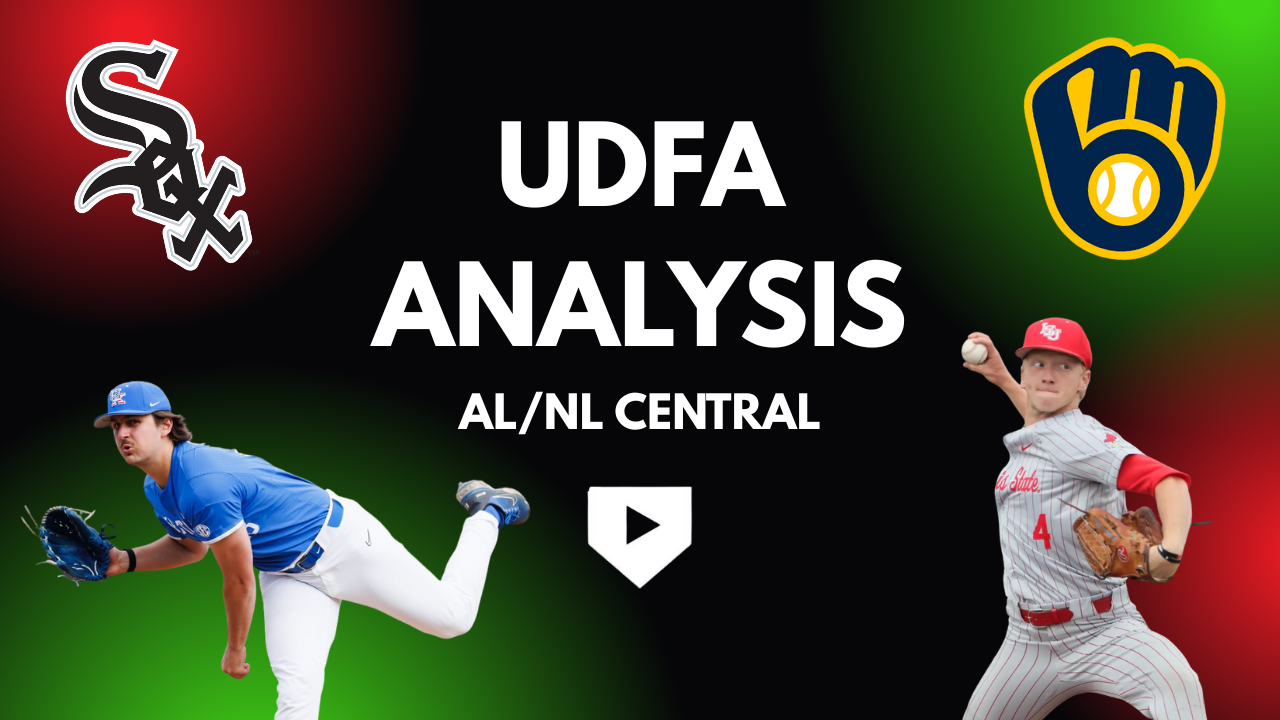


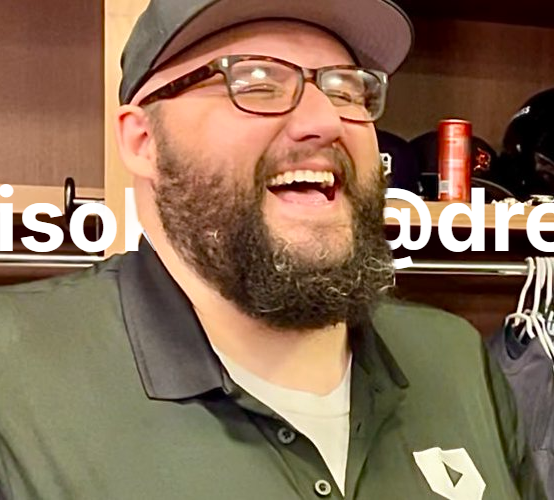
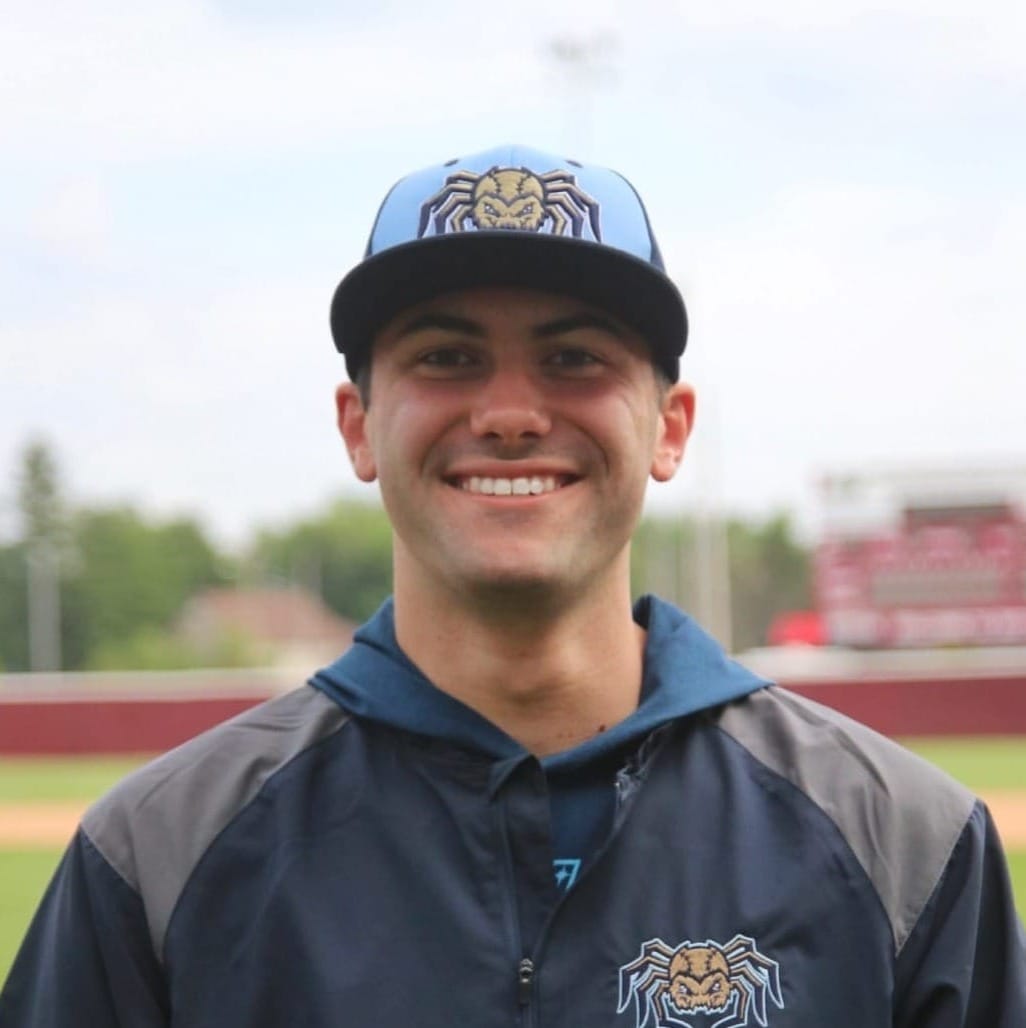
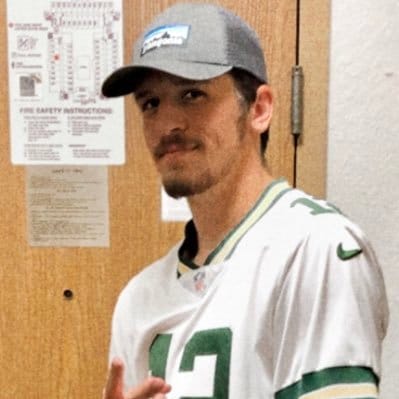
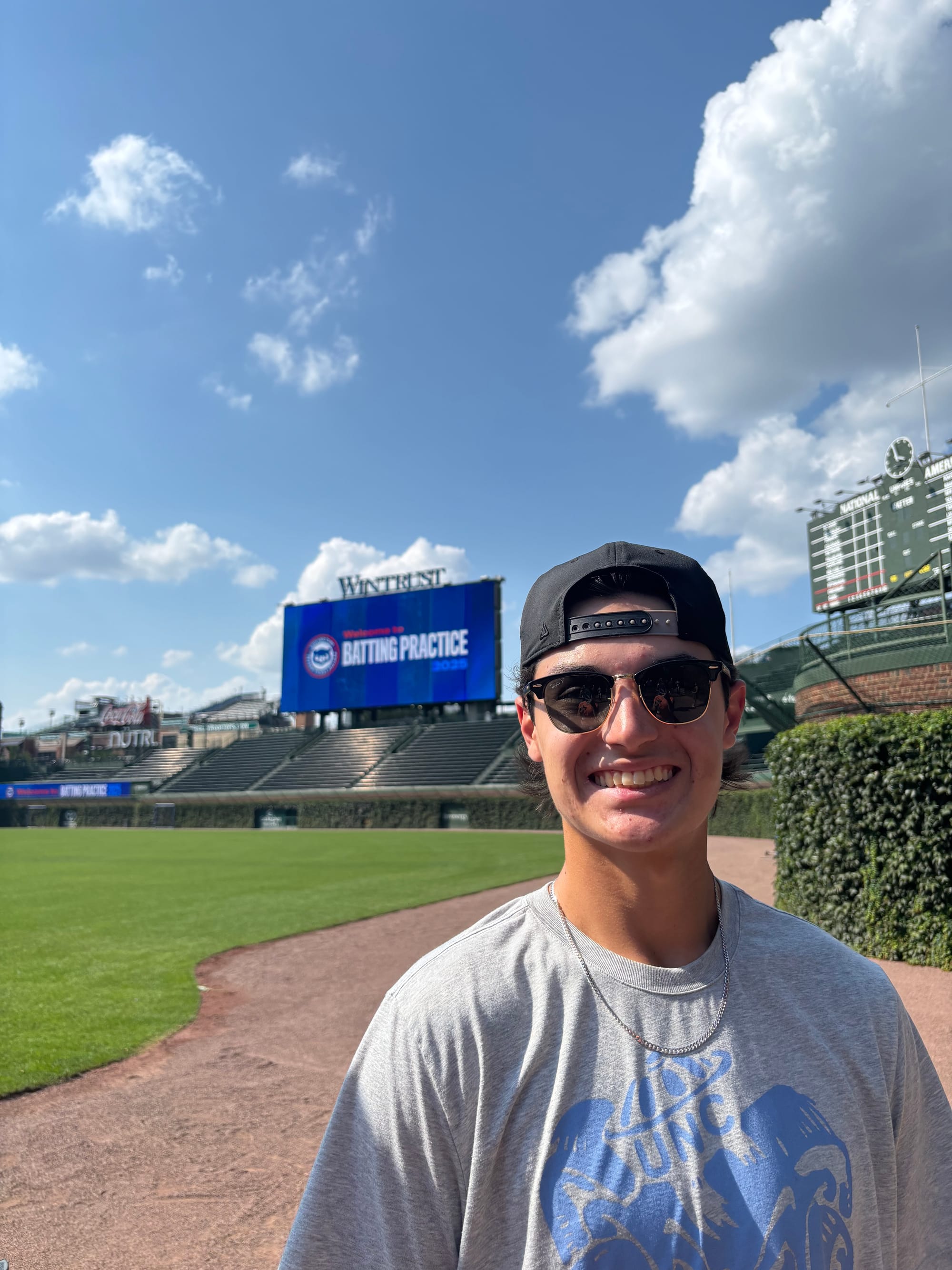



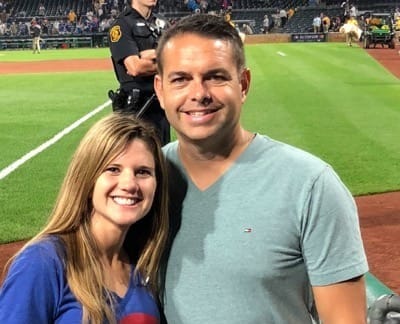


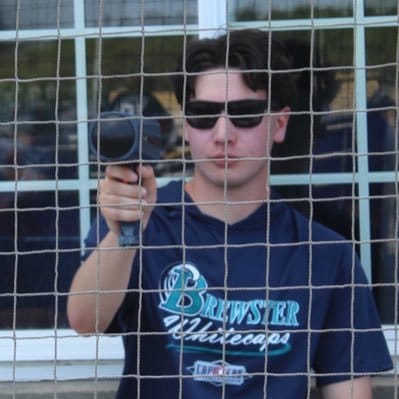

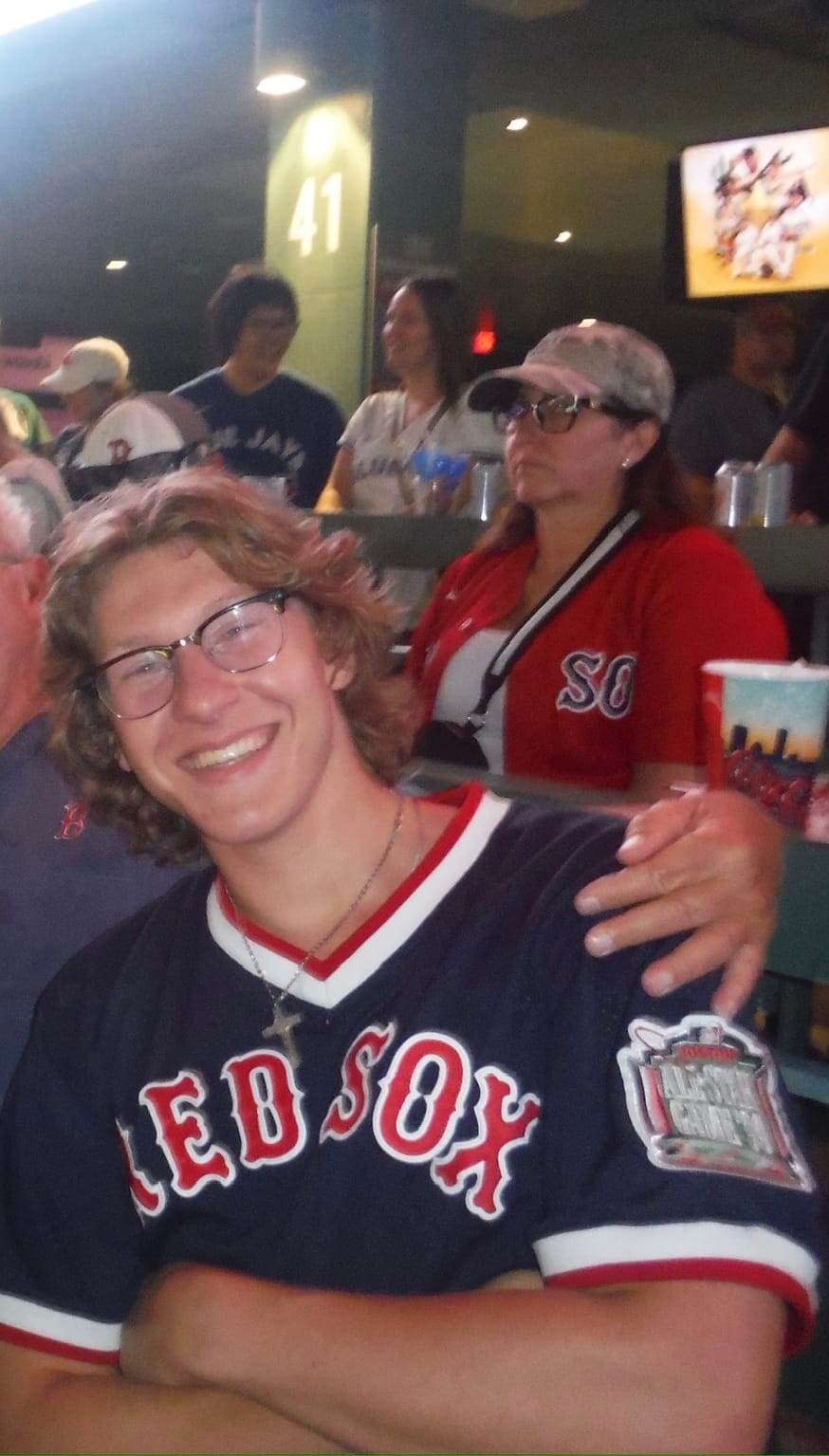
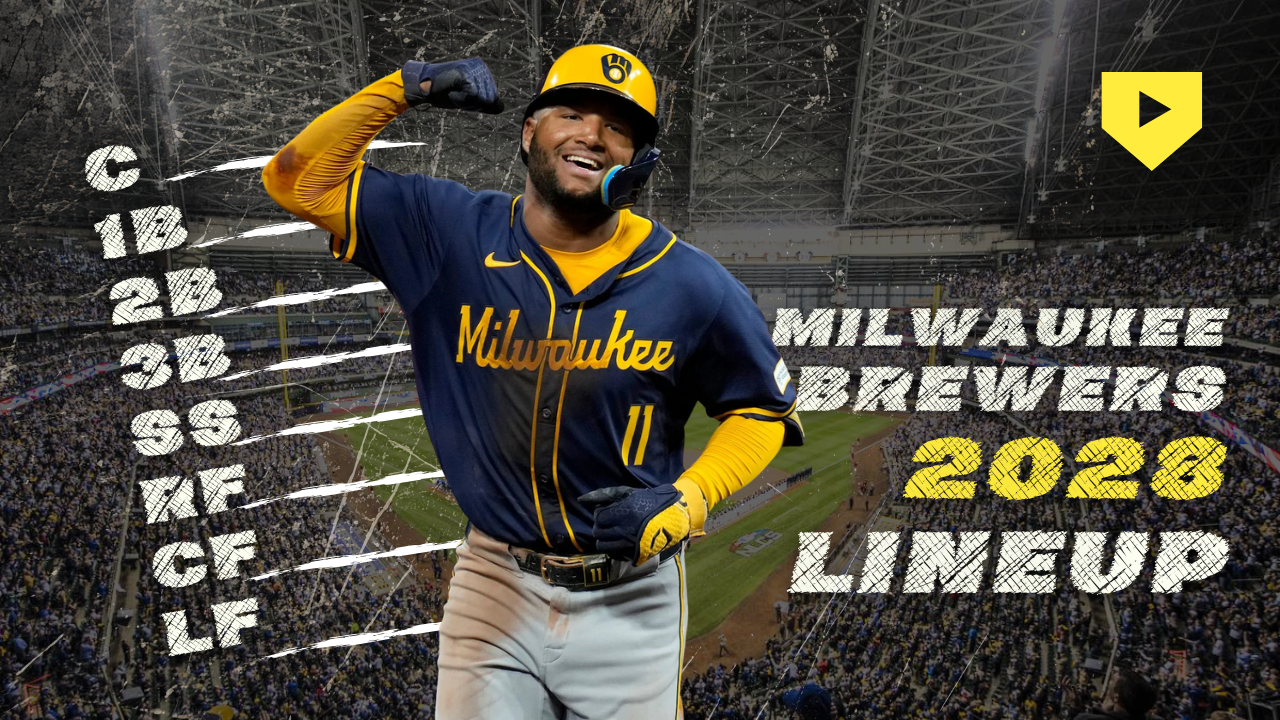


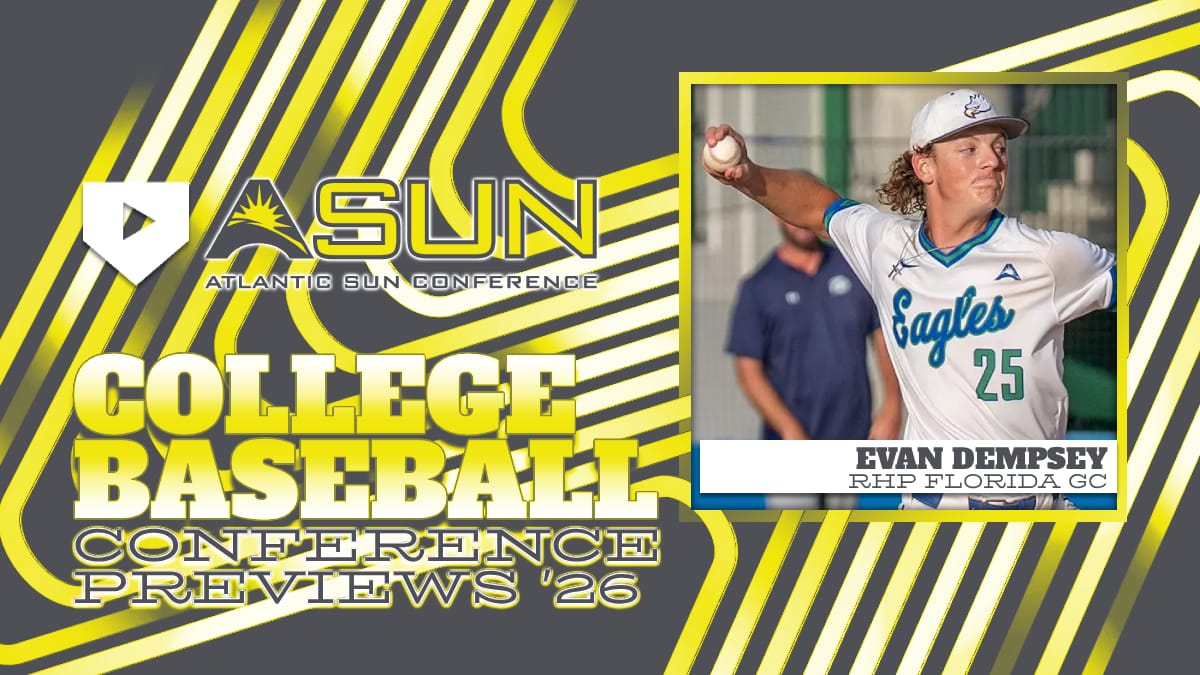




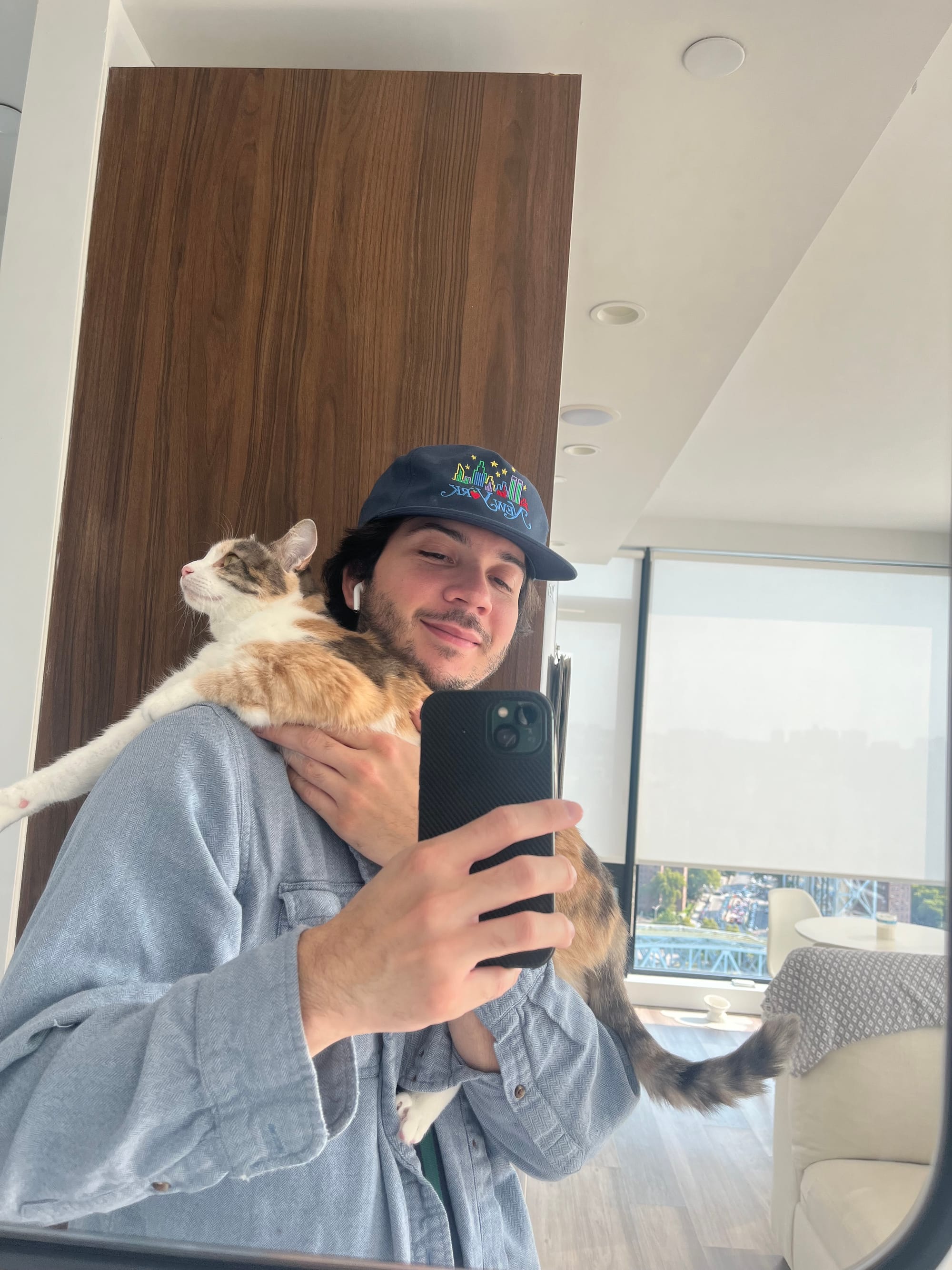
Discussion